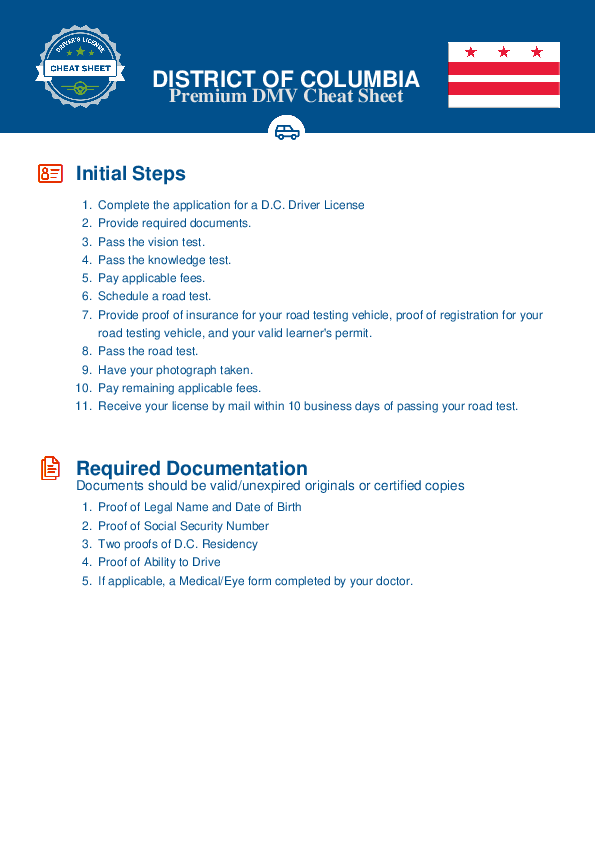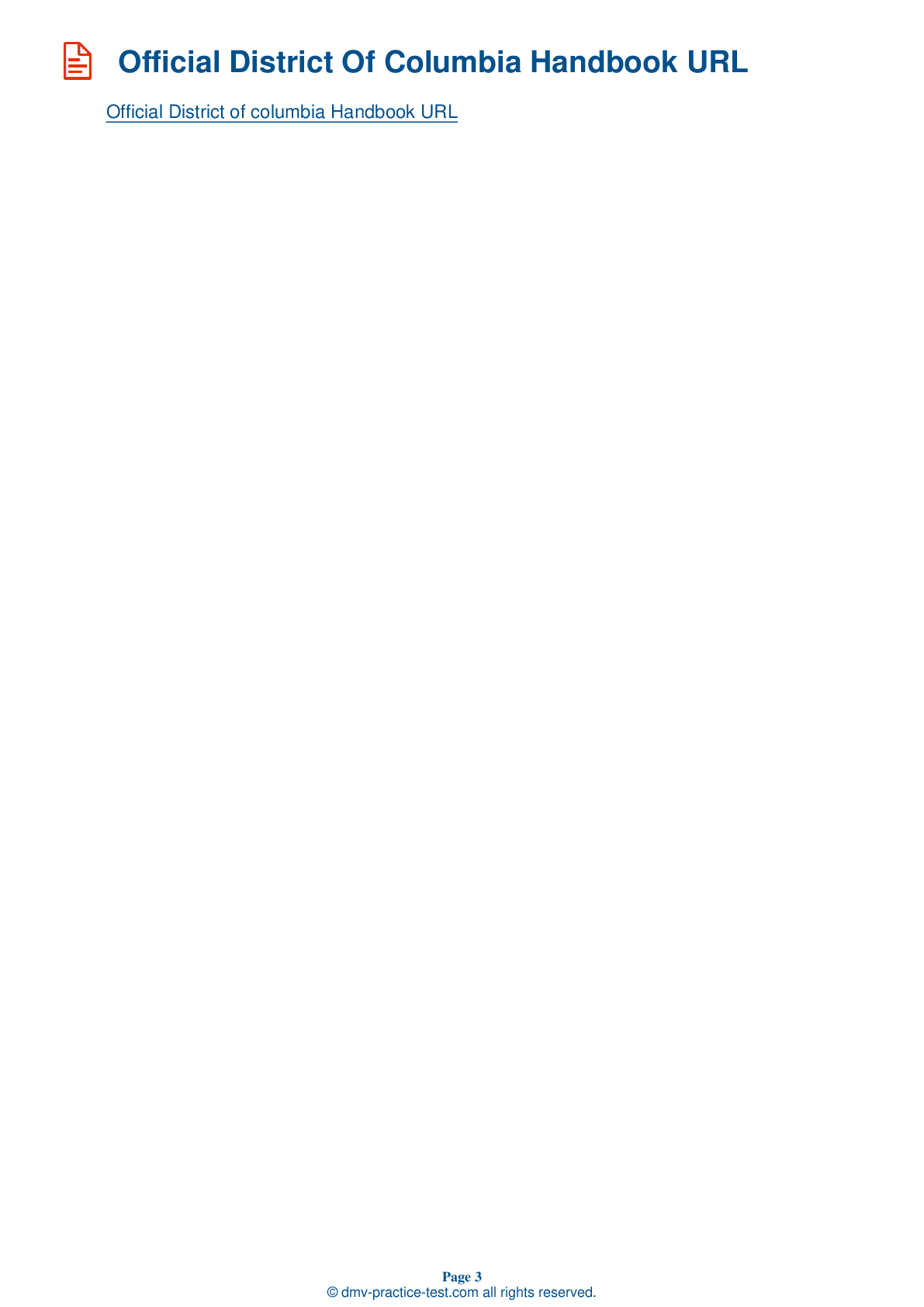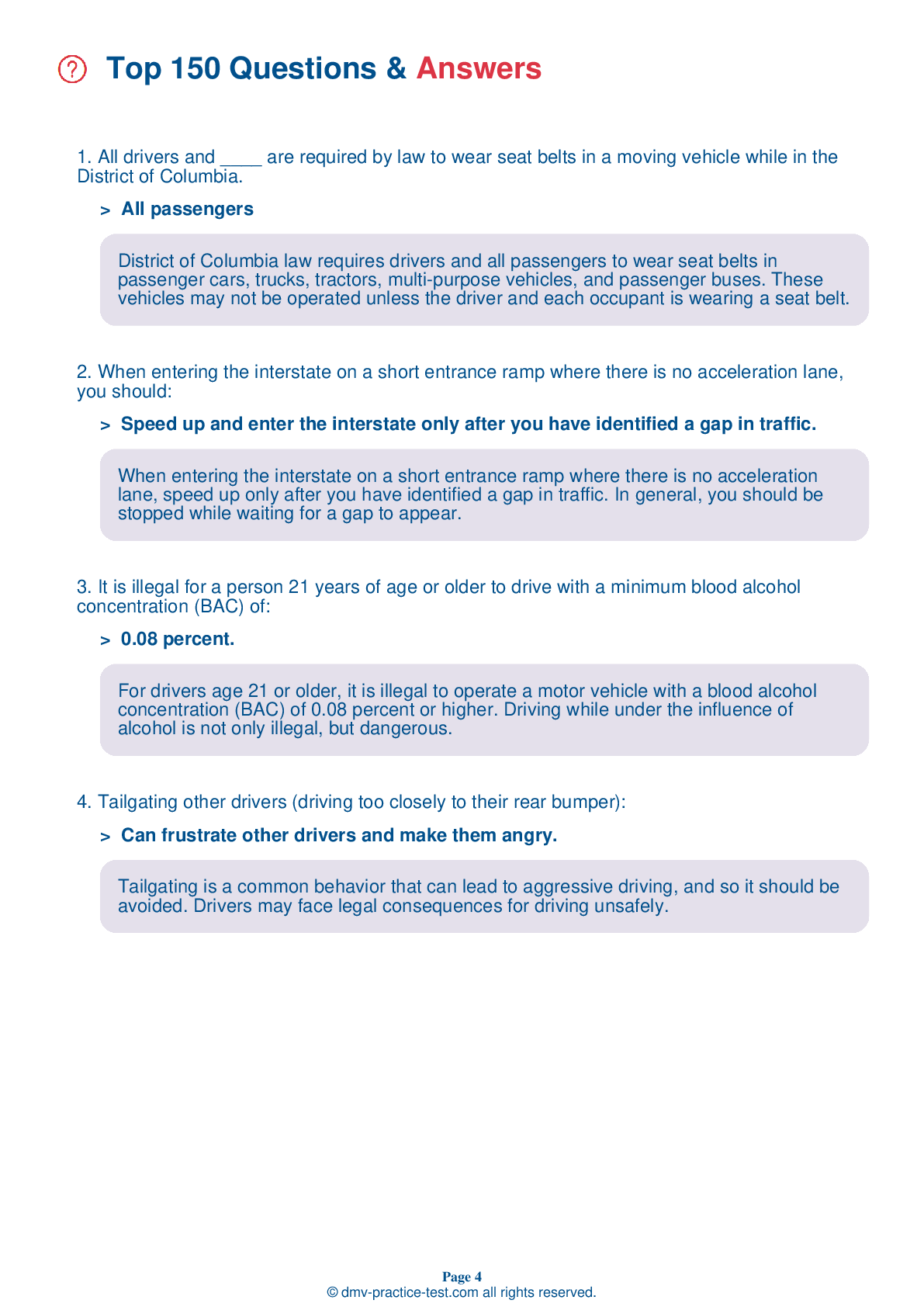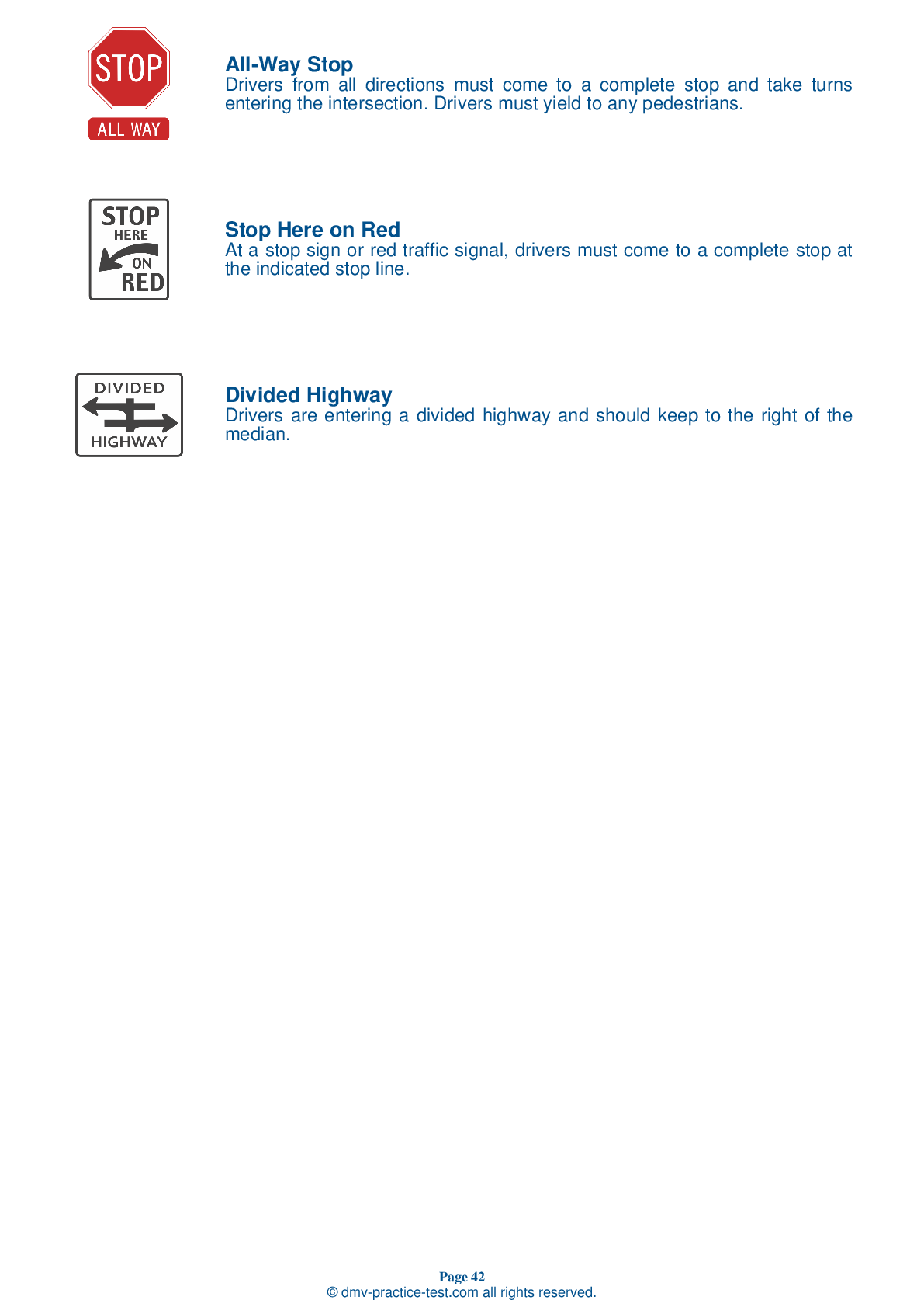FREE District Of Columbia DMV Practice Test #3 Page 3 of 3
This set of District Of Columbia DMV practise tests was been updated for January 2025. It includes questions based on the District Of Columbia Driver Handbook's most significant traffic signs and laws for 2025. Use actual questions that are very similar (often identical!) to the DMV driving permit test and driver's licence exam to study for the DMV driving permit test and driver's licence exam.
On the practise exam, each question gets a tip and explanation to help you remember the concepts. The written component of the official DMV test will include questions about traffic rules, traffic signs, and driving statutes, as well as information from the Driver Handbook.
To achieve the required passing grade, you must correctly answer 20 of the 25 questions. Take our DMV practise exam to help you prepare for your District Of Columbia instruction permit or driver's licence.
The DMV exam is available in several languages.
Using any form of testing help will result in an automatic fail, and the DMV may take further action against your driver's licence, so avoid it.
17 . Certain highway signs require drivers to obey an indicated instruction. Such signs are known as:
Regulatory signs require drivers to obey an indicated instruction. Failure to comply is subject to penalty.
18 . You are coming to an intersection with a flashing red light. You should:
A flashing red traffic light means the same thing as a stop sign. You must come to a complete stop, yield to other traffic and pedestrians, and then proceed when it safe to do so.
19 . You may not cross a single broken white or yellow line:
You may cross a single broken line to pass or change lanes as long as you can do so safely and without interfering with traffic.
20 . Is it legal cross a double solid yellow centerline to pass?
Two solid yellow lines down the center of a two-way road mean that neither lane of traffic may cross the lines, unless they are turning off of the roadway. A driver can cross double yellow lines when turning into or out of a driveway or entrance to a business. No passing is allowed over a solid yellow line.
21 . Many crashes are caused by:
Many crashes are caused by drivers who are driving too fast for conditions. Always drive within the legal speed limits and decrease your speed any time conditions are less than perfect.
22 . When may you legally drive around or under a railroad crossing gate?
Do not go around or under any lowered gate at a railroad crossing. Once the gate is raised, do not proceed across the tracks until you can see clearly in both directions and are sure there are no trains coming.
23 . You should not make sudden stops in front of large trucks and buses because:
Large vehicles require longer distances to stop and accelerate than smaller vehicles do. Making a sudden stop in front of a large vehicle is dangerous because the other driver may not be able to stop in time to avoid a collision.
24 . A blood alcohol concentration of 0.02 percent:
Every 0.02 percent increase in blood alcohol concentration nearly doubles a driver's risk of being in a fatal crash.
25 . When you see this sign, it means:
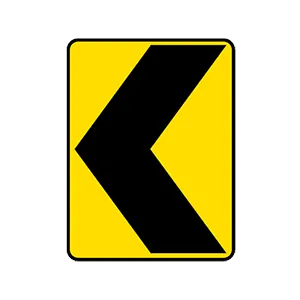
Chevron signs like this indicate that the road curves sharply in the direction indicated by the chevron (in this case, to the left). There may be several chevron signs placed throughout a curve.
Need Car Insurance? No problem!
Compare the best rates in District Of Columbia and find a personalized policy that meets your needs.
1. Are You Currently insured ?
2. Married ?
3. Do you own your Home?
4. Do you have more than 1 car ?
5. Have you or a Family Member Honorably Served in U.S. Military ?
6. Your Name
7. Age
8. Zip code
IMPORTANT REMINDER:Auto Insurance is Mandatory to drive in District Of Columbia. Get covered before you hit the road to avoid any fines.
Ranked by best match
